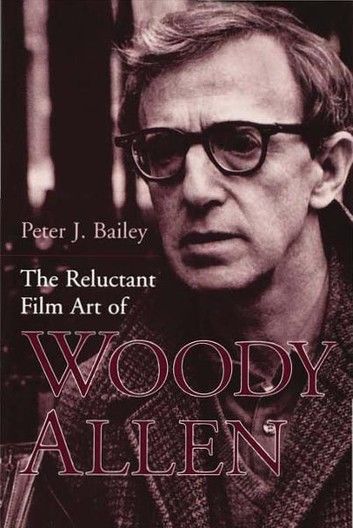| FindBook |
有 1 項符合
The Reluctant Film Art of Woody Allen的圖書 |
 |
The Reluctant Film Art of Woody Allen 作者:Peter J. Bailey 出版社:The University Press of Kentucky 出版日期:2003-04-19 語言:英文 |
| 圖書館借閱 |
| 國家圖書館 | 全國圖書書目資訊網 | 國立公共資訊圖書館 | 電子書服務平台 | MetaCat 跨館整合查詢 |
| 臺北市立圖書館 | 新北市立圖書館 | 基隆市公共圖書館 | 桃園市立圖書館 | 新竹縣公共圖書館 |
| 苗栗縣立圖書館 | 臺中市立圖書館 | 彰化縣公共圖書館 | 南投縣文化局 | 雲林縣公共圖書館 |
| 嘉義縣圖書館 | 臺南市立圖書館 | 高雄市立圖書館 | 屏東縣公共圖書館 | 宜蘭縣公共圖書館 |
| 花蓮縣文化局 | 臺東縣文化處 |
|
|
For three decades, no American filmmaker has been as prolific -- or as paradoxical -- as Woody Allen. From Play It Again, Sam (1972) through Celebrity (1998) and Sweet and Lowdown (1999), Allen has produced an average of one film a year, yet in many of these films Allen reveals a progressively skeptical attitude toward both the value of art and the cultural contributions of artists.
In examining Allen's filmmaking career, The Reluctant Film Art of Woody Allen demonstrates that his movies often question whether the projected illusions of magicians/artists benefit audience or artists. Other Allen films dramatize the opposed conviction that the consoling, life-redeeming illusions of art are the best solution humanity has devised to the existential dilemma of being a death-foreseeing animal. Peter Bailey demonstrates how Allen's films repeatedly revisit and reconfigure this tension between image and reality, art and life, fabrication and factuality, with each film reaching provisional resolutions that a subsequent movie will revise.
Merging criticism and biography, Bailey identifies Allen's ambivalent views of the artistic enterprise as a key to understanding his entire filmmaking career. Because of its focus upon filmmaker Sandy Bates's conflict between entertaining audiences and confronting them with bleak human actualities, Stardust Memories is a central focus of the book. Bailey's examination of Allen's art/life dialectic also draws from the off screen drama of Allen's very public separation from Mia Farrow, and the book accordingly construes such post-scandal films as Bullets Over Broadway and Mighty Aphrodite as Allen's oblique cinematic responses to that tabloid tempest.
By illuminating the thematic conflict at the heart of Allen's work, Bailey seeks not only to clarify the aesthetic designs of individual Allen films but to demonstrate how his oeuvre enacts an ongoing debate the screenwriter/director has been conducting with himself between creating cinematic narratives affirming the saving powers of the human imagination and making films acknowledging the irresolvably dark truths of the human condition.
|











